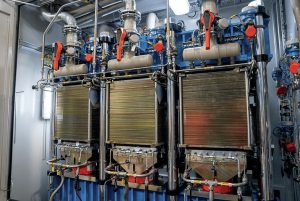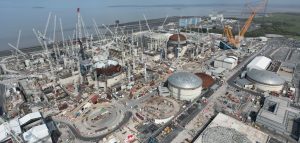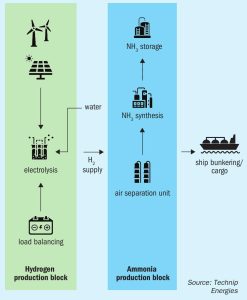
People
Dr Burkhard Lohr , the chair of the executive board of K+S Aktiengesellschaft, will retire at the end of May next year, after more than 12 years in the role, having decided not to extend his current mandate.

Dr Burkhard Lohr , the chair of the executive board of K+S Aktiengesellschaft, will retire at the end of May next year, after more than 12 years in the role, having decided not to extend his current mandate.

QatarEnergy has announced the construction of a new world-scale ammonia-urea production complex at Mesaieed Industrial City in Qatar.

In a major milestone, Yara officially opened its renewable hydrogen plant at Herøya Industrial Park, Porsgrunn, Norway, in June.

The last year has seen the first shipments of low-carbon ‘green’ fertilizers from companies such as Yara, Fertiberia, OCI and Sabic Agri-Nutrients. Partnerships with food manufacturers and retailers are helping to grow this emerging market and drive demand.

With green ammonia from renewable energy facing cost hurdles to adoption, thoughts have turned to using nuclear energy as a carbon free alternative.

OCI Global says that it has reached an agreement for the sale of 100% of its equity interests in its Clean Ammonia project currently under construction in Beaumont, Texas for $2.35 billion on a cash and debt free basis. The buyer is Australian LNG and energy company Woodside Energy Group Ltd. Woodside will pay 80% of the purchase price to OCI at closing of the transaction, with the balance payable at project completion, according to agreed terms and conditions. OCI will continue to manage the construction, commissioning and startup of the facility and will continue to direct the contractors until the project is fully staffed and operational, at which point it will hand it over to Woodside. The transaction is expected to close in H2 2024, subject to shareholder approval.

As the industry pushes towards more sustainable practices, ammonia is emerging as a promising alternative fuel for ships. Effective management of by-product NOx, NH3 and N2 O emissions from the combustion of ammonia is crucial to the success of ammonia as an alternative fuel. A new catalyst has been developed by Enercat to treat these three molecules in one bed. Jean-Rémi Stephany and Emmanuel Rohart of Enercat – Alsys Group report on this new technology which has been developed in marine ammonia combustion engine conditions.
Nutrien has announced the appointment of Mark Thompson as executive vice president and chief financial officer, effective from 26 August 2024. Thompson succeeds Pedro Farah, who will remain with Nutrien in an advisory capacity until his departure on 31 December 2024.

Green ammonia production facilities can be situated in remote areas with access to often fully off-grid renewable power supply. This article examines plant concepts and discusses the challenges and solutions for these plant architectures. Through a case study, an efficient and innovative methodology to compare options and optimise the sizing of the plant is presented. The methodology addresses the intermittency of the power production, the flexibility limits of the main process units, and the costs of investment and operation, using proprietary techno-economic dynamic simulation software, Odyssey.
Shell Deutschland has taken a final investment decision (FID) to progress REFHYNE II, a 100 MW renewable proton-exchange membrane (PEM) hydrogen electrolyser at the Shell Energy and Chemicals Park Rheinland in Germany. Using renewable electricity, REFHYNE II is expected to produce up to 44 t/d of renewable hydrogen to partially decarbonise site operations. The electrolyser is scheduled to begin operating in 2027. Renewable hydrogen from REFHYNE II will be used at the Shell Energy and Chemicals Park to produce energy products such as transport fuels with a lower carbon intensity. Using renewable hydrogen at Shell Rheinland will help to further reduce Scope 1 and 2 emissions at the facility. In the longer term, renewable hydrogen from REFHYNE II could be directly supplied to help lower industrial emissions in the region as customer demand evolves.